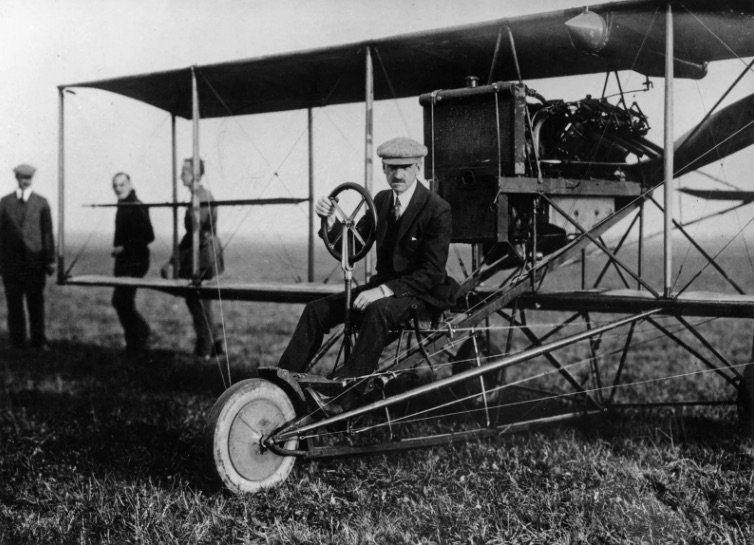Glenn Curtiss: Aviation Pioneer
This weekend I travelled upstate with my Dad and brother to visit my Grandpa who lives in Horseheads, NY. On Saturday, we took a trip to the Glenn Curtiss Museum in nearby Hammondsport. Born in the sleepy village at the south end of Keuka Lake in 1878, Curtiss transformed American aviation and established Hammondsport at its center. Upon entering the museum we learned that we were visiting on what would have been Curtiss's 144th birthday. The museum is a testament to one man's ingenuity and the sleepy village which produced him.
Glenn Hammond Curtiss, a gifted inventor who only reached the 8th grade, began racing and selling bicycles, then built engines and turned the bicycles into motorcycles. In 1907, he reached a top speed of 136mph on a V8 motorcycle. He was dubbed the 'fastest man on earth', a title which remained unbroken until 1930. Eventually, Curtiss began equipping dirigibles with engines before teaming up with Alexander Graham Bell in an aviation start-up called the Aerial Experiment Association (AEA). The AEA built several 'heavier-than-air' machines (airplanes) and on June 4, 1908, Curtiss flew the 'June Bug' in the world's first kilometer flight, at the location of the present day museum. Though the flight was five years after the Wright brothers successful attempt at Kitty Hawk, it was the world's first announced and public exhibition of a man in flight. Over the years, Curtiss remained in the spotlight, completing flights from Albany to the skies over Manhattan and other exhibitions. Curtiss created the first flying schools across the country and manufactured and sold aircraft. While most know of the Wright brothers contributions to aviation, Glenn Curtiss is perhaps the most influential person in the evolution of American aviation. [1]
The 'Fastest man on Earth'. Copyright unknown.
The museum is a large collection of all modes of travel, while showcasing the history of Curtiss's forays and successes in bicycling, motorcycling, and aviation, as well as the Curtiss-Wright Corporations achievements during World War I and II. The museum also has a restoration shop and a section about local and regional history. Hammondsport must have been an exciting place in those early days, with young Curtiss racing his bicycles among its streets, and soon after flying above them. Just after the turn of the 20th century was an interesting time in American history and Curtiss was at the center of it, using his engines and designs to propel man into the skies, transforming American culture and the world. On the shores of Lake Keuka stands an aluminum replica of one of Curtiss's airplane designs which he tested on its waters. A few minutes south of Hammondsport, Curtiss is buried beside his family at the Pleasant Valley Cemetery; a giant stone which reads the family name marks the spot, and a plaque memorializes Curtiss's achievements.
[1] https://glennhcurtissmuseum.org/education/who-was-glenn-curtiss/
Resources
https://glennhcurtissmuseum.org/


